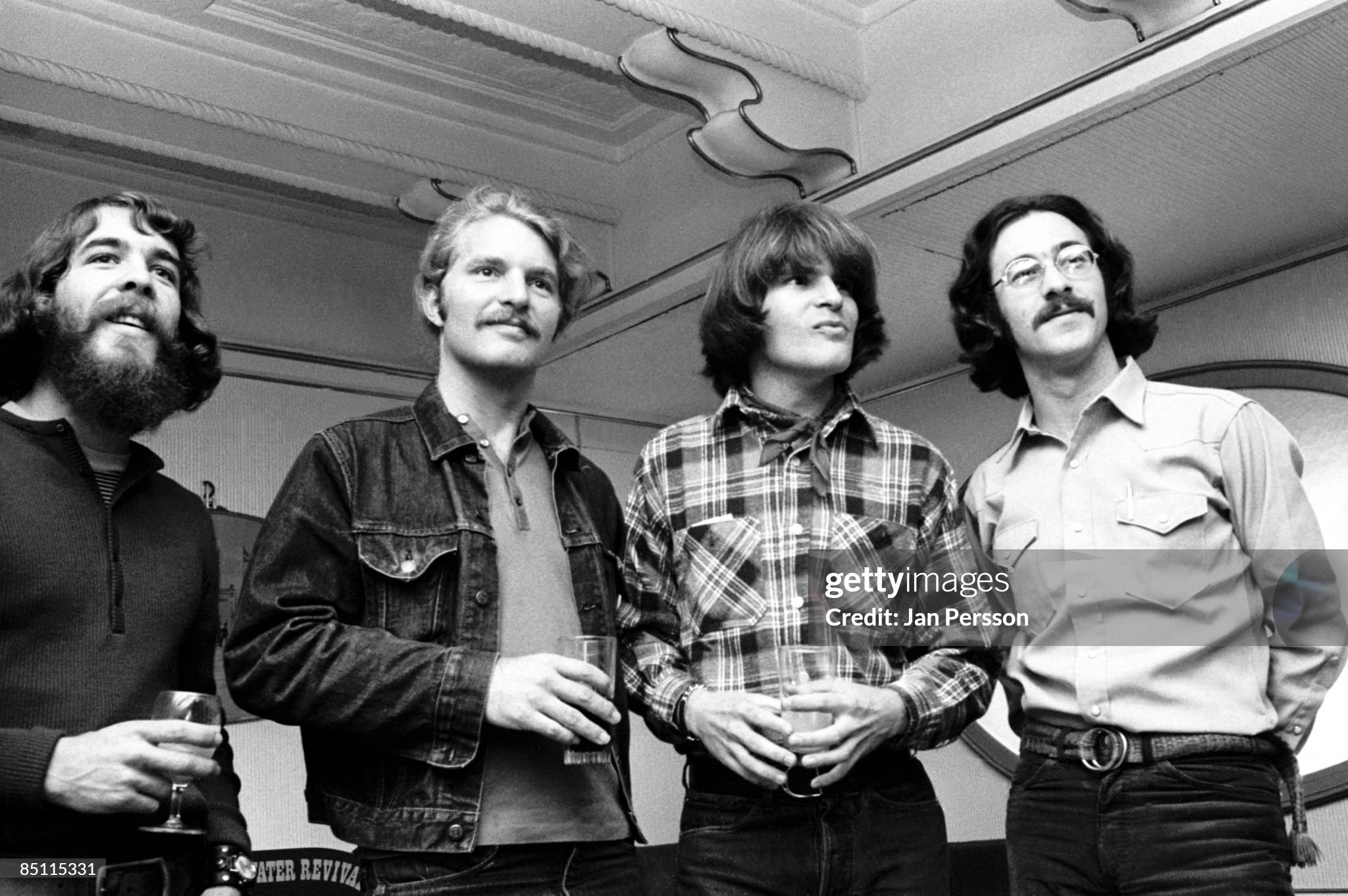
A folk memory turned road hymn—childhood roots carried by a band built for motion.
Let’s set the anchors before the feelings gather. “Cotton Fields” arrived not as a U.S. single but as a centerpiece of Creedence Clearwater Revival’s 1969 LP Willy and the Poor Boys, cut at Wally Heider Studios in San Francisco and released in late October of that year. On the album sleeve it sits early—track 3—credited to the song’s author, Huddie “Lead Belly” Ledbetter, whose 1940 recording gave the tune its bones.
Chart life came in a roundabout way. CCR didn’t push “Cotton Fields” to U.S. pop radio in 1969; instead, the song found its single moment abroad—No. 1 in Mexico in June 1970, proof that a rootsy American cover could bloom far from home. A decade later, Fantasy plucked the track for the compilation Creedence Country and finally sent it to American country radio; the single (backed with “Lodi”) reached No. 50 on Billboard’s Hot Country Singles in early 1982.
Now, the record in your ears. Where Lead Belly’s version is a porch-side reminiscence and the Beach Boys found international pop sheen, CCR aim for motion—a mid-tempo shuffle that walks rather than hurries, guitars chiming bright over a rhythm section that keeps the wheels turning. John Fogerty sings with that sandpaper conviction of his, but he keeps the edges friendly; the arrangement never crowds him. It feels like a car-window song, the kind you can sing without checking your range, verses punctuated by a chorus that lands like a memory you didn’t know you still knew.
There’s a quiet scholarship in the choice to cut it. On Willy and the Poor Boys, Fogerty frames America as a set of work songs and street corners; alongside “Cotton Fields,” the band also covers “The Midnight Special,” another tune associated with Lead Belly. That pairing isn’t an accident—it’s a statement about lineage. Fogerty has said he learned his way to these songs through folk revival elders; you can hear that respect in how CCR simplify the arrangement without sanding off the grain. The band doesn’t decorate the melody; it trusts it.
Even the lyric’s tiny shift tells a story. Lead Belly’s line put the fields “ten miles from Texarkana”; CCR sing “just about a mile,” a tweak that fits Fogerty’s habit of tightening pictures until they feel immediate. Map-sticklers have pointed out that Texarkana proper sits north of the Louisiana line, but that’s not the point. What CCR borrow from folk tradition isn’t geography; it’s permission—to make an old song personal enough to live in right now.
If you lived through the era, you remember how the track felt in the middle of that album’s weather. Willy and the Poor Boys ricochets between street-parade uplift (“Down on the Corner”), righteous snarl (“Fortunate Son”), and storefront blues. “Cotton Fields” is the deep breath between them—a postcard from childhood sung by a band already halfway to the next town. The mix leaves air around the vocal, bass and drums walking with humane restraint, rhythm guitars sketching sunlight at the edges. It’s country, it’s folk, it’s rock and roll; mostly, it’s American memory made portable.
What older ears tend to hear now is the song’s posture. There’s no cosplay of hardship, no leaden nostalgia. Fogerty doesn’t pretend to be someone else; he lets the tune be what it always was—a simple melody sturdy enough to carry home. That’s why the cover endures alongside the original and the Beach Boys’ hit: it honors the folk truth at the song’s core (a place, a parent, a rhythm of work) without freezing it in amber. When the chorus comes, it doesn’t insist; it reminds.
The discography footnotes make the picture tidier. Album release: October 1969, Fantasy. Studio: Wally Heider. Track order: A3 on original pressings. Composer credit: Ledbetter. International single success: Mexico #1 in 1970. Later U.S. appearance on country radio: Creedence Country single, Billboard Country #50 (early 1982). Each fact describes the same truth from a different angle: a folk song that outlived its century because bands like CCR kept it moving.
Put “Cotton Fields” on today and you may find yourself doing what people always have with it—joining. The groove leaves room for your voice; the story leaves room for your own place and porch. Somewhere between the first verse and the last chorus, the distance between a 1940 field recording and a 1969 San Francisco studio collapses. That’s the quiet miracle of this cover: Creedence Clearwater Revival don’t modernize an antique; they shake the dust, set the tempo, and let a small, indelible melody carry you back to the thing we all travel with—a notion of home we can see even from far down the road.